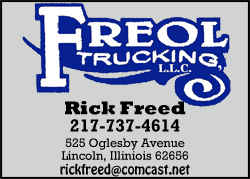|
 When puzzled controllers told the pilot that he was 9 miles north
of his intended destination, he made an unusual admission. "Uh, yes
sir, we just landed at the other airport." When puzzled controllers told the pilot that he was 9 miles north
of his intended destination, he made an unusual admission. "Uh, yes
sir, we just landed at the other airport."
His calm, understated response belied the danger of the situation: A
mammoth aircraft had just landed on the wrong stretch of concrete,
miles from its planned path, in the dark. The runway just happened
to be long enough.
As he tried to sort out the situation over the radio, the pilot
could be heard mixing up east and west in his notes, acknowledging
he could not read his own handwriting and getting distracted from
the conversation by "looking at something else."
The 747, flown by a two-person crew with no passengers, intended to
touch down late Wednesday at McConnell Air Force Base in Wichita,
where it was supposed to deliver parts for Boeing's new 787
Dreamliner to a nearby company that makes large sections of the
next-generation jet.
Instead, the cargo plane landed to the north, at the smaller Col.
James Jabara Airport.
The jet took off again Thursday and within minutes landed at its
original destination.

The crew had flown into an area where there are three airports with
similar runway configurations: the Air Force base, the Jabara
airfield and a third facility in between called Beech Airport.
That could help explain the mistake. Pilots also say it can be tough
to tell a long runway from a shorter one on final approach. And
Jabara is directly on the path toward McConnell, so the only
difference would be that a pilot on final approach would reach it a
little sooner.
While it is rare for a pilot to land at the wrong airport,
occasional confusion is not unusual.
Every month or two, a pilot headed toward Wichita's Mid-Continent
Airport begins to turn toward McConnell by mistake, said Brent
Spencer, a former air traffic controller in Wichita who is now an
assistant professor at Embry-Riddle Aeronautical University in
Prescott, Ariz.
Mid-Continent and McConnell "have an almost identical runway setup,
so it was not at all uncommon for an airliner or someone coming in
from the east ... to pick up the wrong runway lights," he said. It
happened often enough that "we would always watch for that, and we
could always correct the pilot."
Jabara's 6,100-foot runway is toward the low end of what Boeing
recommends for the 747. How much runway the plane needs varies
depending on weather, the weight of the loaded plane and the
airport's elevation.
Boeing Co. owns the plane involved in the mistaken landing, but it's
operated by Atlas Air Worldwide Holdings, a New York-based company
that provides crews or planes to companies.
An Atlas Air spokeswoman declined to answer questions and referred
inquiries to Boeing.
Boeing spokesman Doug Alder said the company would be consulting
with Atlas to "find out exactly what happened so that it doesn't
happen again."
The Federal Aviation Administration planned to investigate whether
the pilot followed controllers' instructions or violated any
regulations.
[to top of second column] |

After the pilot concluded he had landed at the wrong airport, the
crew and controllers tried to figure out where the plane was.
At one point, a controller read to the pilot the coordinates where
he saw the plane on radar. When the pilot read the coordinates back,
he mixed up east and west.
"Sorry about that, couldn't read my handwriting," the pilot said on
a recording provided by LiveATC.net.
A few moments later, the pilot asked how many airports there are to
the south of McConnell. But the other airports are both north of
McConnell.
"I'm sorry, I meant north," the pilot said when corrected. "I'm
sorry. I'm looking at something else."
They finally agreed on where the plane was after the pilot reported
that a smaller plane, visible on the radar of air traffic control,
had just flown overhead.
The modified 747 is one of a fleet of four that hauls parts around
the world to make the Dreamliner. Known as the "Dreamlifter," it
features an expanded body to carry whole fuselage sections and other
large parts. If a regular 747 with its bulbous double-decker nose
looks like a snake, the overstuffed Dreamlifter looks like a snake
that swallowed a rat.
According to flight-tracking service FlightAware, this particular
Dreamlifter has been shuttling between Kansas and Italy, where the
center fuselage section and part of the tail of the 787 are made.
Spirit AeroSystems, which is next to McConnell, completes the
sections and sends them to Boeing plants in Washington state and
South Carolina for assembly into finished jets.

Almost a decade ago, a Northwest Airlines plane bound for Rapid
City, S.D., with 117 passengers landed instead at nearby Ellsworth
Air Force Base. As the plane descended through clouds, one of the
pilots reported, the crew saw a runway in front of them and
mistakenly thought it was the right one.
Last year, a cargo plane bound for MacDill Air Force base in Tampa,
Fla., landed without incident at the small Peter O. Knight Airport
nearby. An investigation blamed confusion identifying airports in
the area, and base officials introduced an updated landing
procedure.
[Associated
Press; JOSHUA FREED and
ROXANA HEGEMAN]
Freed reported from
Minneapolis. Associated Press writers Tom Murphy in Indianapolis,
Margaret Stafford in Kansas City, Mo., and Joan Lowy in Washington
contributed to this report.
Copyright 2013 The Associated
Press. All rights reserved. This material may not be published,
broadcast, rewritten or redistributed. |